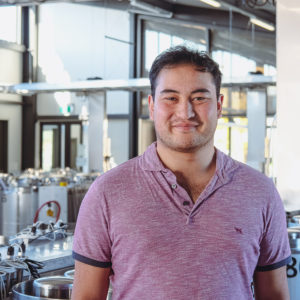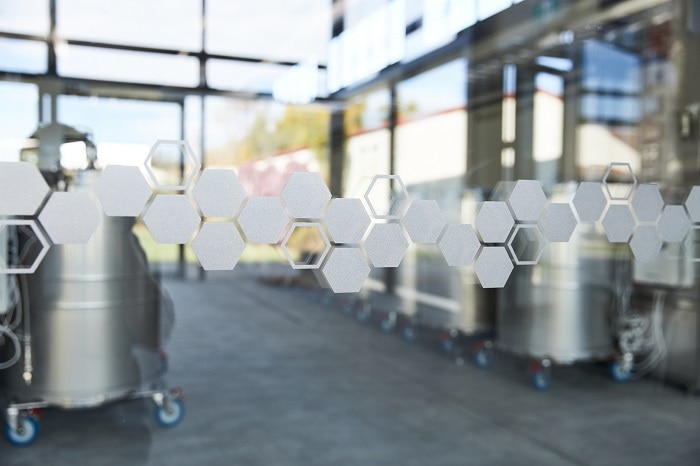
Daniel at the Research Winery
PhD student Daniel Mak, along with his University of Canterbury team, was announced Research Runner Up at the 2022 Food, Fibre and Agritech Supernode Challenge on 21 June. The team’s Winealyse technology simplifies wine testing methods and cuts out traditional methods that require lab equipment.
Daniel is working alongside University of Canterbury Professor Renwick Dobson and Associate Professor Volker Nock, as well as Dr Tanya Rutan from Bragato Research Institute in Marlborough. In this Q&A, he lets us in on some of the detail.
What will Winealyse do?
Winealyse uses Lab-on-a-Chip (LoC) technology to replace lab-based testing methods. LoC uses microfluidics to miniaturise testing into small, hand-held devices. We are currently working on a device to test for glucose and fructose that will allow winemakers to do a quick, easy, and cheap test. We are also looking to expand the tests we can do for other analytes like malic acid, YAN, and alcohol.
Microfluidics are familiar to people in these days of Rapid Antigen Tests (RATs). Does that increase people’s understanding of the technology?
RATs have been greatly beneficial when explaining what I do. It used to be that people’s eyes would glaze over when I talked about microfluidics (except when I mentioned the wine). Now when I mention I am creating RATs for wine, everyone has a basic understanding. However, this does come with cons as everyone is aware of some of the limitations of RATs. Luckily, our technology is much more advanced in design than RATs, with higher accuracy and even easier to use – definitely not sticking anything up your nose.
New Zealand wineries spend $80 million on testing each year. Why is it so expensive?
Wineries are always measuring aspects of their wines, especially around fermentation when many biochemical reactions are taking place. If you are a small winery that cannot afford expensive machines and the personnel to run them, samples will often be tested externally. The costs for these tests can be astronomical and really add up when a winery is running dozens of ferments.
How will Winealyse compare?
Winealyse will make it easy for winemakers to get lab-quality results right at the tank and for a much cheaper price than sending samples to a lab. This means winemakers can make decisions much faster and do more testing if required, which will lead to an increase in the quality of the final wine.
How have wine companies responded?
Winemakers have been very intrigued so far. Our technology is still early stage so I have not been able to show off any prototypes yet, but in my discussions with winemakers, they are very keen to try new methods of testing, especially ones that will lower costs and time. I hope to get prototypes into winemakers’ hands early next year.
What are future applications for this technology?
Once we have established our technology in the New Zealand wine industry, we will look to expand to other winemaking regions such as France and Italy. We aim to become one of New Zealand’s premier biotechnology companies and provide a boost to New Zealand’s economy and the New Zealand wine industry. Microfluidic testing has the potential to be applied to any liquid, so we will look to develop tests for other beverages such as beer, and completely different areas such as healthcare or environmental monitoring.
What are you enjoying most about your work?
I really enjoy working at this interface between research and industry. Doing this commercialisation work for Winealyse alongside the research for my PhD means that my day is very varied and there is never a dull moment. It has also provided me with many great opportunities to develop.
What support have you had for this work?
We have been very fortunate to have received funding from a wide range of sources, including the University of Canterbury’s Biomolecular Interaction Centre, BRI, the MacDiarmid Institute, Kiwinet, and the Food, Fibre and Agritech (FFA) Challenge. I have also been supported by a range of mentors for the commercialisation side of this project through programmes such as the FFA Challenge and Kiwinet’s Emerging Innovator.
This article was first published in issue 135 of New Zealand Winegrower magazine and is republished with permission.

















